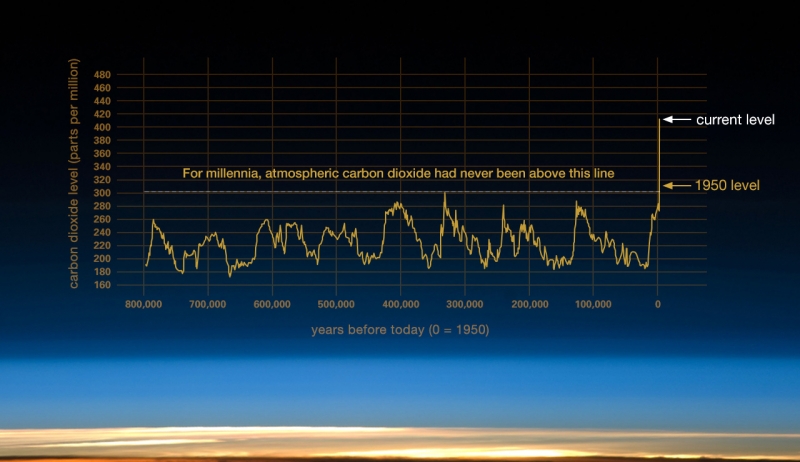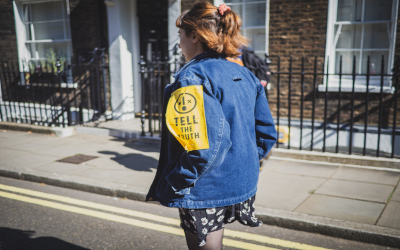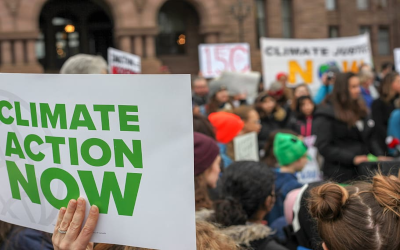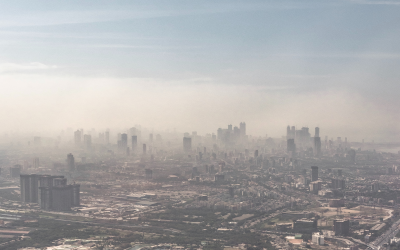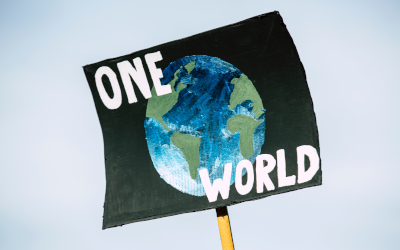
What Is The Greenhouse Effect?
What Is A Greenhouse?
A greenhouse is a specialized structure in which plants are grown. This includes tropical plants, vegetables, seedlings and other types of plants.
Greenhouses are sometimes called “glass houses.” This is because they are metal or wooden frames covered with glass or other transparent materials. These materials let in a lot of light and energy from the Sun.
You may be wondering why people use greenhouses. Why not just grow plants outdoors?
We use greenhouses because they stay warmer than their surroundings, even in the winter or at night. This is why they are also known as “hot houses”.
Why Do Greenhouses Stay So Hot?
Download a PDF of the interactive here
Image - Text Version
Shown is a colour comic-style illustration of a greenhouse under a bright sun.
The sun is bright yellow in the top left corner. In the centre of the image, the walls and roof of the greenhouse are translucent blue, so the inside is visible. On the floor, along the walls, are long brown planters filled with different types of leafy green plants.
A squiggly blue arrow points from the glass roof of the greenhouse, up to the sun. This is labelled 1. Next to it, a much longer arrow points down from the sun, through the glass of the greenhouse, to the floor. This is labelled 2.
Inside the greenhouse, a squiggly yellow arrow points from the floor of the greenhouse up to its glass roof, where it bounces off the glass. This is labelled 4. This arrow points back down into the greenhouse again. This area is labelled 5.
Finally, a red arrow points from the floor of the greenhouse, out through the side wall. This is labelled 3.
Listen to this explanation of how a greenhouse works:
Why Do We Call It The Greenhouse Effect?
Have you ever gotten into a car that’s been sitting in the sun on a hot day?
The same process that heats cars and greenhouses also warms our planet. We call it the greenhouse effect.
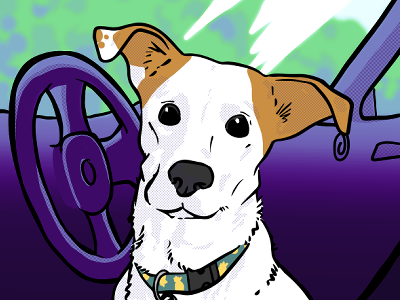
Shown is an illustration of a small dog in a car. The dog is of the beagle variety. To the left of the dog we can see a dark blue steering wheel, and to the right of the dog we can see the passenger door of the car.
Image - Text Version
Shown is an illustration of a small dog in a car. The dog is of the beagle variety. To the left of the dog we can see a dark blue steering wheel, and to the right of the dog we can see the passenger door of the car.
A blanket of gases called the atmosphere surrounds the Earth.
Some of these gases are greenhouse gases. They trap heat, like the walls of a greenhouse.
The greenhouse gases in our atmosphere keep our planet warm enough for us to survive.
Not enough greenhouse gases would make the Earth too cold for humans. In fact, without greenhouse gases in our atmosphere, Earth’s average temperature would be -18 degrees Celsius.
But, too much greenhouse gas in the atmosphere would make the Earth too warm.
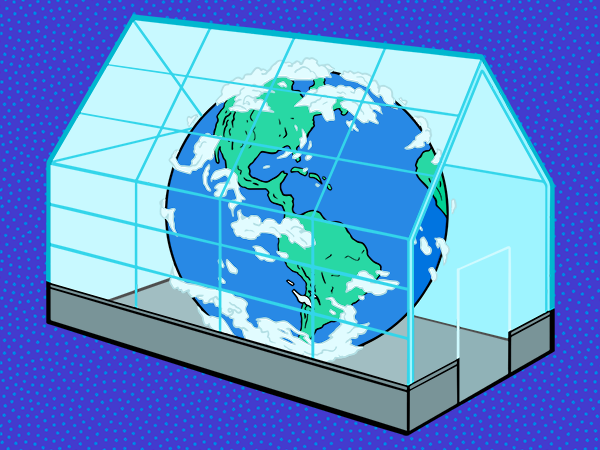
The Greenhouse Effect In The Atmosphere
Download a PDF of the interactive here
Image - Text Version
Shown is a colour comic-style illustration of the greenhouse effect in Earth’s atmosphere.
The illustration is of the earth from space. The curve of the earth's crust is visible below clouds in the bottom right part of the image. The sun is in the top left corner, surrounded by stars and dark space. Above the horizon of the Earth is a thick stripe of green mist.
Two blue squiggly blue lines with arrows point down from the sun. The left one, labelled 1, goes through the green mist and touches the earth. This spot is labelled 3. The right arrow reflects off the mist and points back into space. This is labelled 3.
New the centre, a red squiggly line points from the Earth’s surface, out into space. The bottom of this line is labelled 4, and the top is labelled 5.
To the right, a yellow squiggly line is labelled 6. It zig-zags from the Earth, up and down between the surface and the top of the green mist. It ends with the arrow pointing down to a body of water.
Listen to this explanation of the greenhouse effect in our atmosphere:
Greenhouse Gases In Our Atmosphere
Greenhouse gases actually make up a very small percentage of our atmosphere. Most of it is primarily made up of nitrogen and oxygen.
Greenhouse gases include carbon dioxide, water vapour, methane, ozone, nitrous oxide, and fluorinated gases. The greenhouse gas that you will hear about most often in relation to climate change, though, is carbon dioxide.
Carbon dioxide (CO2) is the most common greenhouse gas in our atmosphere. Carbon dioxide is a colourless, odourless gas. Carbon dioxide is made of carbon and oxygen.
Carbon moves between the Earth, living things, and the atmosphere in the carbon cycle. Humans release carbon dioxide into the atmosphere when we breathe. We also emit a lot of carbon dioxide when we burn fossil fuels. Carbon dioxide concentrations haven’t been so high for over three million years.
* Learn More about the carbon cycle*
Image ©2021 Let’s Talk Science
Image - Text Version
Shown is a colour comic-style illustration of the chemical compound of carbon dioxide (CO2).
Six large dark blue spheres float in black space. Each one is labelled with a capital letter C. They also have small pale blue spheres bonded to them - one on each side. The pale blue spheres are labelled with capital letter Os.

Methane (CH4) is the next most common greenhouse gas. Methane traps roughly 70 times more heat than carbon dioxide. The main sources of methane in Canada are from fossil fuels use, farming, and waste.
Image ©2021 Let’s Talk Science
Image - Text Version
Shown is a colour-comic style illustration of the chemical compound methane (CH4).
Six large dark blue spheres float in black space. Each one is labelled with a capital letter C. Each one also has four small pink spheres bonded to it. These are labelled with capital letter Hs.

Carbon dioxide (CO2) is the most common greenhouse gas in our atmosphere. Carbon dioxide is a colourless, odourless gas. Carbon dioxide is made of carbon and oxygen.
Carbon moves between the Earth, living things, and the atmosphere in the carbon cycle. Humans release carbon dioxide into the atmosphere when we breathe. We also emit a lot of carbon dioxide when we burn fossil fuels. Carbon dioxide concentrations haven’t been so high for over three million years.
* Learn More about the carbon cycle*
Image ©2021 Let’s Talk Science
Image - Text Version
Shown is a colour comic-style illustration of the chemical compound of carbon dioxide (CO2).
Six large dark blue spheres float in black space. Each one is labelled with a capital letter C. They also have small pale blue spheres bonded to them - one on each side. The pale blue spheres are labelled with capital letter Os.

Methane (CH4) is the next most common greenhouse gas. Methane traps roughly 70 times more heat than carbon dioxide. The main sources of methane in Canada are from fossil fuels use, farming, and waste.
Image ©2021 Let’s Talk Science
Image - Text Version
Shown is a colour-comic style illustration of the chemical compound methane (CH4).
Six large dark blue spheres float in black space. Each one is labelled with a capital letter C. Each one also has four small pink spheres bonded to it. These are labelled with capital letter Hs.

Sources Of Greenhouse Gases
Many greenhouse gases exist naturally. Greenhouse gases cycle through the Earth’s systems. There are greenhouse gas sources and greenhouse gas sinks. Sources are parts of the cycle that add greenhouse gases to the atmosphere. Sinks are parts of the cycle that remove greenhouse gases from the atmosphere.
Recently, the concentration of greenhouse gases in our atmosphere has gotten higher. This is because humans have dramatically increased the amount of sources, which now outweigh the sinks.
These human-created greenhouse gases come from burning fossil fuel, driving cars, farming, and other human activities.
Adding more greenhouse gases to the atmosphere by humans is making it trap more heat than it used to. This amplification of the natural greenhouse effect is the anthropogenic greenhouse effect.
Take a look at this graph. What do you notice about the carbon dioxide levels in the past 50 years? How do they compare to the levels of previous years?
Try This!
Take a look at this graph. What do you notice about the carbon dioxide levels in the past 50 years? How do they compare to the levels of previous years?
Human Activities And Greenhouse Gases
Flip each card over to learn about some of the human activities that produce greenhouse gases.

Buying Clothes
Making, transporting, and even washing clothes all requires energy. Much of this energy comes from the burning of fossil fuels. Greenhouse gases, such as carbon dioxide, are produced from burning fossil fuels.

Traveling
Many of the vehicles we use for travel run on fossil fuels such as gasoline and diesel fuel. In addition to carbon dioxide, combustion of these fuels can also release nitrous oxide. This is also a greenhouse gas. Vehicles also emit carbon monoxide and soot.
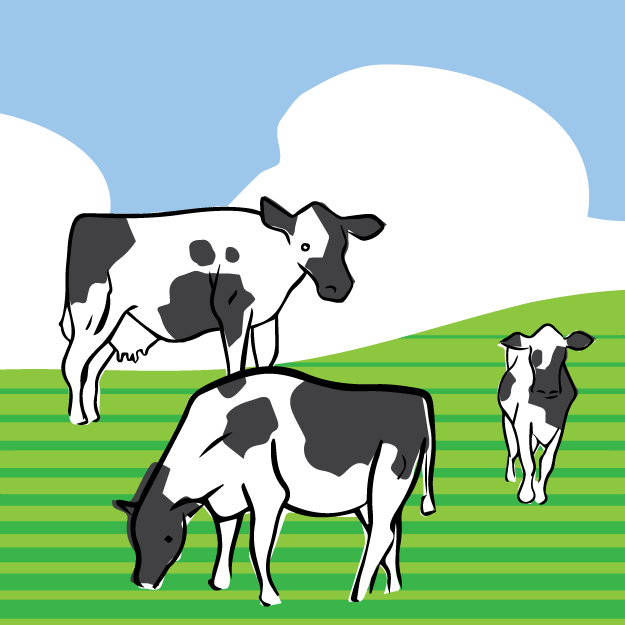
Farming
Cows and other livestock release methane through their digestive processes. Methane is a significant greenhouse gas.

What Will You Do?
What other human activities can you think of that are sources of carbon?
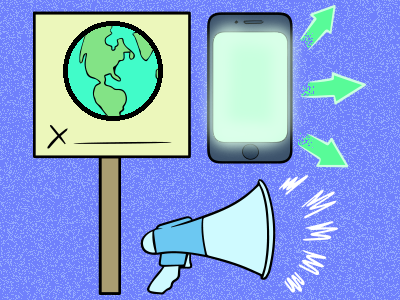
Now that you know about how greenhouse gases contribute to climate change, think about your own choices and habits. What actions could you take to reduce your own greenhouse gas emissions?
Visit the Actions page to get inspired and start making a difference!
Let us know what you think...
Learn More
References
Government of Canada. (2019, Apr 01). About methane emissions. Canada.ca
Let's Talk Science. (2021). The Carbon Cycle.
Let's Talk Science. (2019). What are Greenhouse Gases?
Lohner, S. (2017, Jun 01). Heating with the Greenhouse Effect. Scientific American.
NASA. (n.d.) The Relentless Rise of Carbon Dioxide.
NOAA. (n.d.) Greenhouse Gases.
Reference List
Government of Canada. (2019, Apr 01). About methane emissions. Canada.ca
Let's Talk Science. (2021). The Carbon Cycle.
Let's Talk Science. (2019). What are Greenhouse Gases?
Lohner, S. (2017, Jun 01). Heating with the Greenhouse Effect. Scientific American.
NASA. (n.d.) The Relentless Rise of Carbon Dioxide.
NOAA. (n.d.) Greenhouse Gases.
